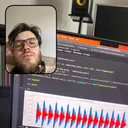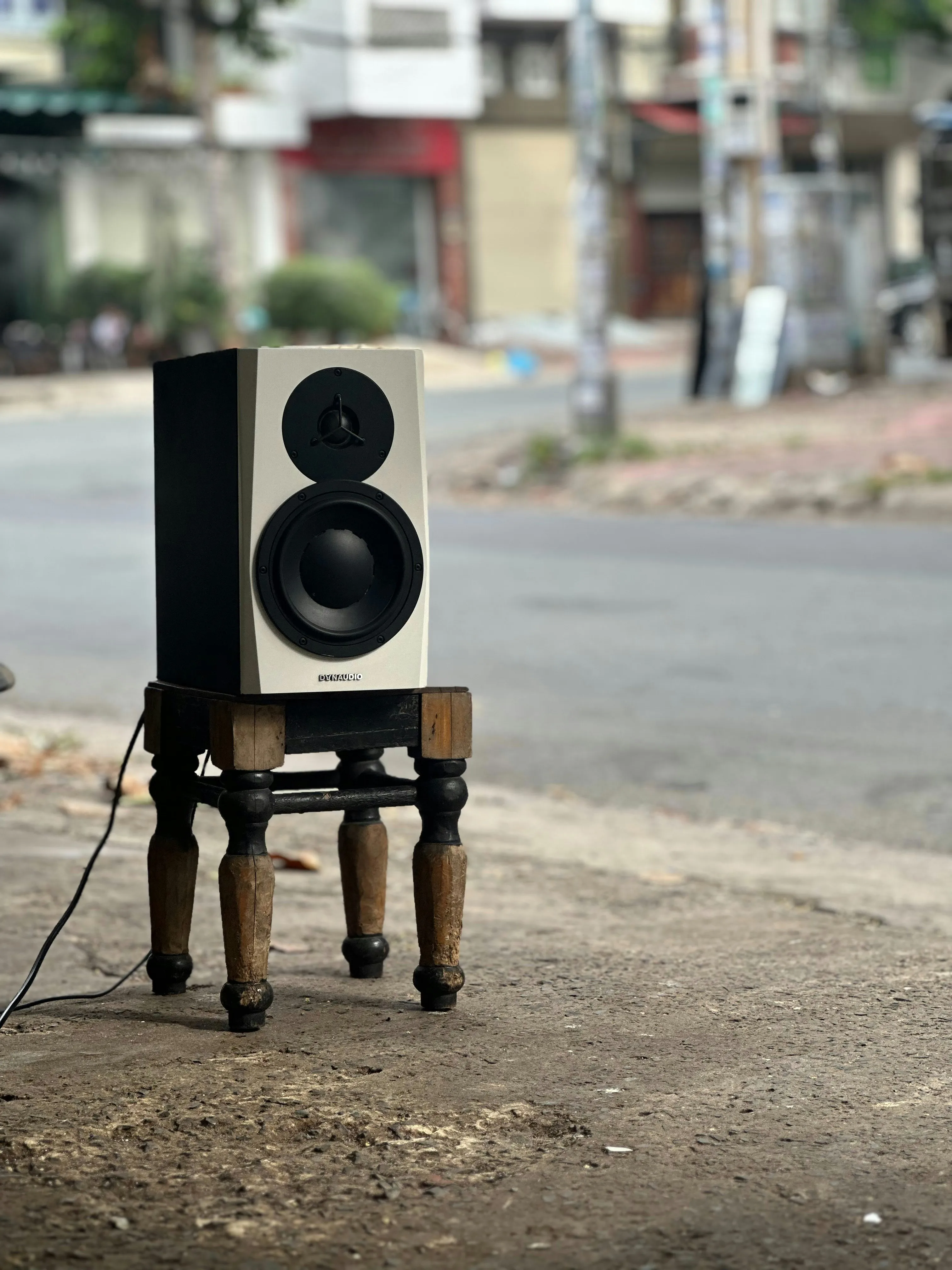
Sound, it’s ubiquitous. An all-encompassing phenomenon, like the air we breathe or the light we see. Sound surrounds us, sound informs us, and sound is a key dimension through which you experience the physical world. Through the thousands of unique auditory sensations a day, you are bathed in wave after wave of sound, from the incoming danger of a car on the road to the white noise of a fan you forget is on until you turn it off. What the hell is this thing? What the hell is sound?
As it turns out, this is a rather large question. I intend to explore all the different aspects of sound through a series of articles, but it’s best to begin by becoming familiar with sound in its most basic and physical sense.
Table of contents
Open Table of contents
Physically, what is sound?
Working with a physical definition isn’t too tricky, and we’ll make this the focus of today. We’ll start with a scientific description and work our way back. In its most mathsy and matter-of-fact definition, we can describe sound as: “a longitudinal wave, displacing the normal configuration of molecules within a medium that generates inertia and elastic restoring forces.” (Kinsler, 2000).
I appreciate this means nothing right now, but lets get into it and things will start making sense.
First, the term “a longitudinal wave”. No doubt, you may have heard sound described as a ‘wave’ at some point in time. There’s a reason for this. Both physically and in how we represent it, sound is a wave. It is entirely correct to think of sound as a wave that literally hits you, similar to a wave when you’re standing in the water at a beach; it’s the same thing. If we imagine the waves being created by a wave machine at the far end of a swimming pool rather than the intangible void of the ocean, visualising the creation of these waves becomes very feasible. I envision a large paddle violently pushing the water back and forth. As the paddle pushes forward into the water, it produces the high-pressure peak of a wave in front of it, a peak of water that travels forth and continues with the paddle until the paddle reaches the end of its range and begins moving back. As the paddle moves back, the high-pressure part of the wave travels on thanks to the inertia of the water, and a prominent low-pressure trough forms behind it as the paddle retreats. This peak and trough clearly discern the highs and lows of a wave, a wave with a top and bottom position distinctly different from the undisturbed height of the water.
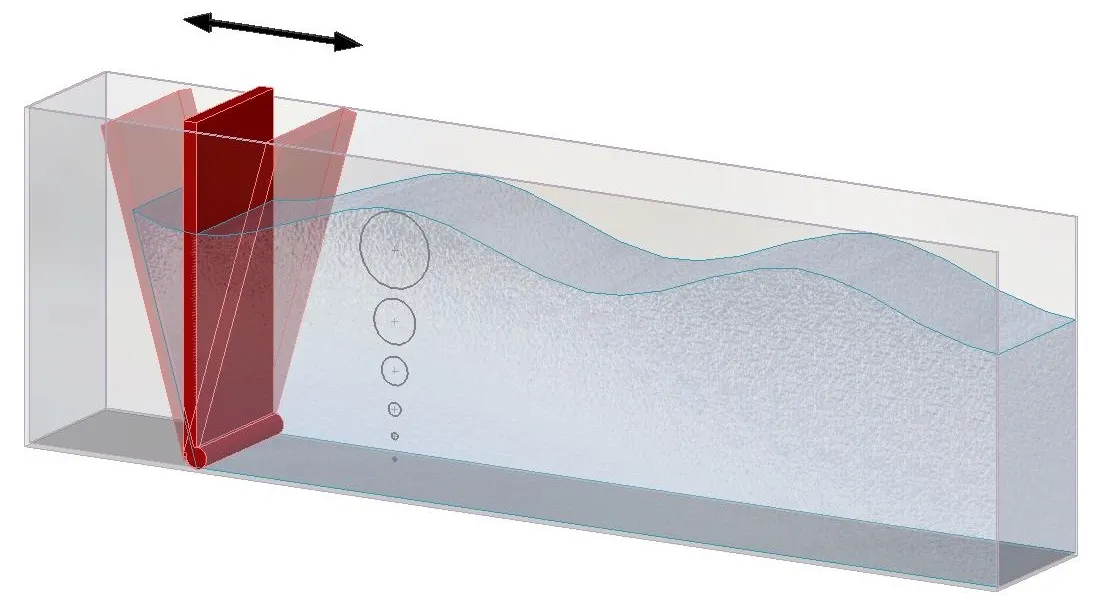
Sound, while not as intuitively obvious, is almost identical to this wave machine. Water is disturbed, creating the waves that we’ve described above, which hit and crash over any people standing at the far end of the pool. These individuals don’t interact directly with the wave machine. Instead, the machine wobbles or, perhaps a more technical term, “displaces” the medium (in this case, the water of the pool), and this disturbed wave made of water is what actually hits the individual. Much the same, a sound wave is not a thing in and of itself but rather some wave-shaped disturbance of the medium (likely air) which travels through the medium from the source until crashing over the individual. Precisely the same as our wave pool analogy. This is how sound is a wave; it is literally a wave made of air! Only, instead of a big water paddle disturbing a pool, it’s the cone of a speaker or the vibration of a guitar string disturbing the air and airwaves crashing into you. These airwaves are sound.
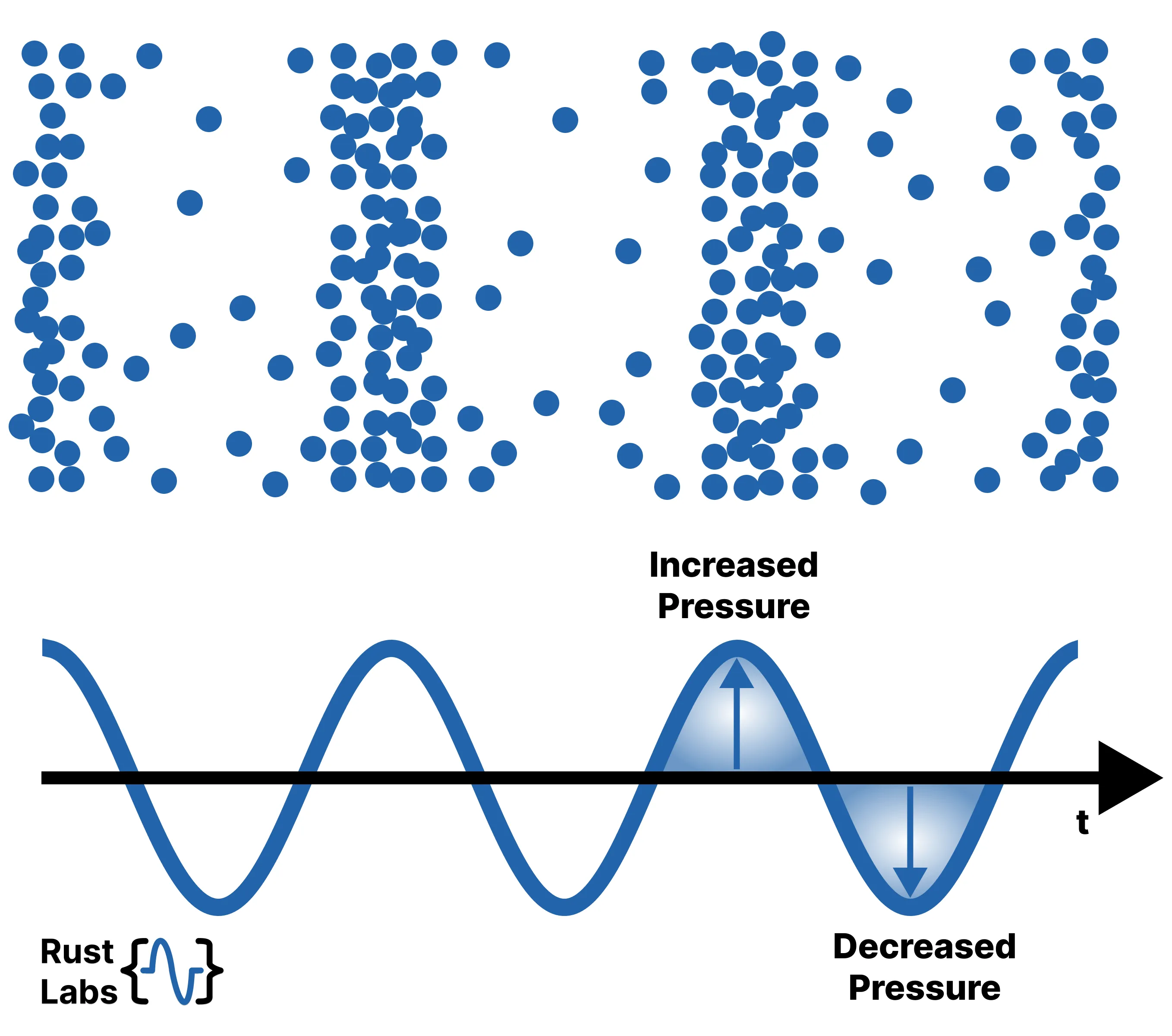
We then represent these waves with a waveform. By plotting these intermittent points of low pressure and high pressure across time, we create a usable representation of the sound. Not just a usable representation but a highly accurate representation, a direct translation from physical pressure wave to maths. This what what a waveform is.
a longitudinal wave, displacing the normal configuration of molecules within a medium that generates inertia and elastic restoring forces.
We can see how our earlier definition describes sound physically. A “longitudinal wave” as in just an up-down wave, the peaks and troughs which we observe and measure. The “displacing the normal configuration” refers to the water being disturbed from its unmoving position (the “normal configuration”). The “inertial and elastic forces” refer to specific physical properties the medium must possess in order to let the wave travel; the water must have inertia in order to travel to the target after the paddle has stopped pushing it.
Simple, so now we have a theoretical idea of what a sound is, but what does that mean to us?
How we define sound
Having a theoretical definition means we now have something we can work with. The definition of a sound wave provides us with properties that we can manipulate the express sound and its complexity. For the sake of simplicity (and so I don’t run out of future article ideas), we’re going to keep it simple for this post, deliberately choosing to not go into psychoacoustics* or the more complex properties of sound instead we’ll continue to build our understanding of sound simplistically so we can understand sound’s core properties.
*Psychoacoustics focusses on how we perceive sound, both the mechanical process and the weird quirks of sound perception like why we hear specific frequencies more than others, or why we have to record music at a particular speed to maintain accuracy
Physically, as we’ve come to learn, sound isn’t too complex (just this wave thing). In this domain with a simple sound wave, there are only really 2 variables that we need to keep in mind (for now). There’s “frequency”, or the number of full cycles a wave completes per second, measured in Hertz (Hz) and “amplitude”, the deviation of the peaks and troughs from the middle (See Fig 3).
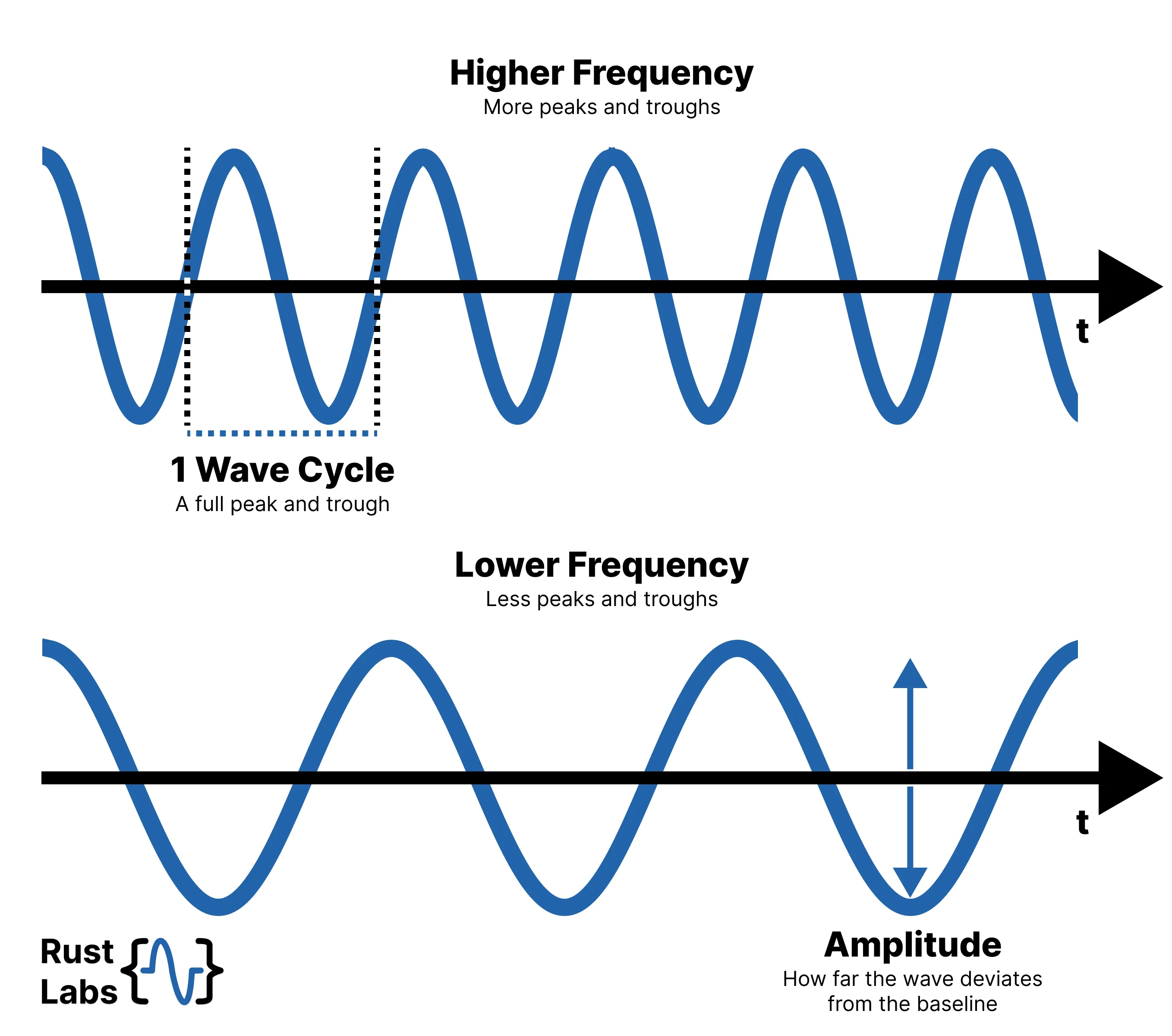
In sound, frequency essentially means pitch, much the same way that a low frequency of light is red; a low frequency of sound is bass. Taking a wave, we can arbitrarily increase or decrease the frequency. As the number of cycles per second increases or decreases, the pitch also changes. The pitch increases as the waves become faster and shorter and decreases as the waves become longer and slower. This relationship is best summarised by simple examples, such as a wave cycling at 440Hz, a seemingly arbitrary number that, when graphed, may not seem significant. Still, this wave, if played, would translate exactly to the note A4 or middle A on the piano, as 440Hz has a direct musical pitch when the wave is perceived. Rather than seeing pitch and frequency as two distinct things, we should see them as one. I like to think of the terms “pitch” and “frequency” as completely interchangeable, just favoured in different contexts. When in more musical domains, such as performance or composition, one might prefer to speak in notes and pitch, as that makes the most sense, yet when in more technical domains, such as mix engineering or sound design, one might adopt a more frequency focussed terminology, thinking in Hz and big waves vs small waves. This is the first variable we use to define audio; whether you call it A4 or 440Hz, you mean the same thing: a sound at a specific speed, a sound at a particular pitch.
Then there’s amplitude, as shown in (See Fig 3), which simply refers to how tall and low the waveforms are or how much the wave deviates from its baseline. A greater degree of deviation results in a sound with more energy, while waves with a lower deviation have less energy. In physical space, it’s literally how much air it displaced at that point in time. It’s easy to think of this value as essentially volume; more deviation is louder, but technically, wave energy is not volume, as volume is actually a logarithmic and non-linear psychological phenomenon. Still, we are trying really hard to stay away from psychoacoustics! So, for now, while not entirely accurate, higher amplitude, bigger wave, easier to hear; lower amplitude, smaller wave, harder to hear.
Summary
So, to answer our original question, “What is sound?”. Sound is a disturbance of a medium in a wave-like pattern, and it’s the shape of this wave, defined by its frequency and amplitude, which determines what we hear.
Simple, one question answered!
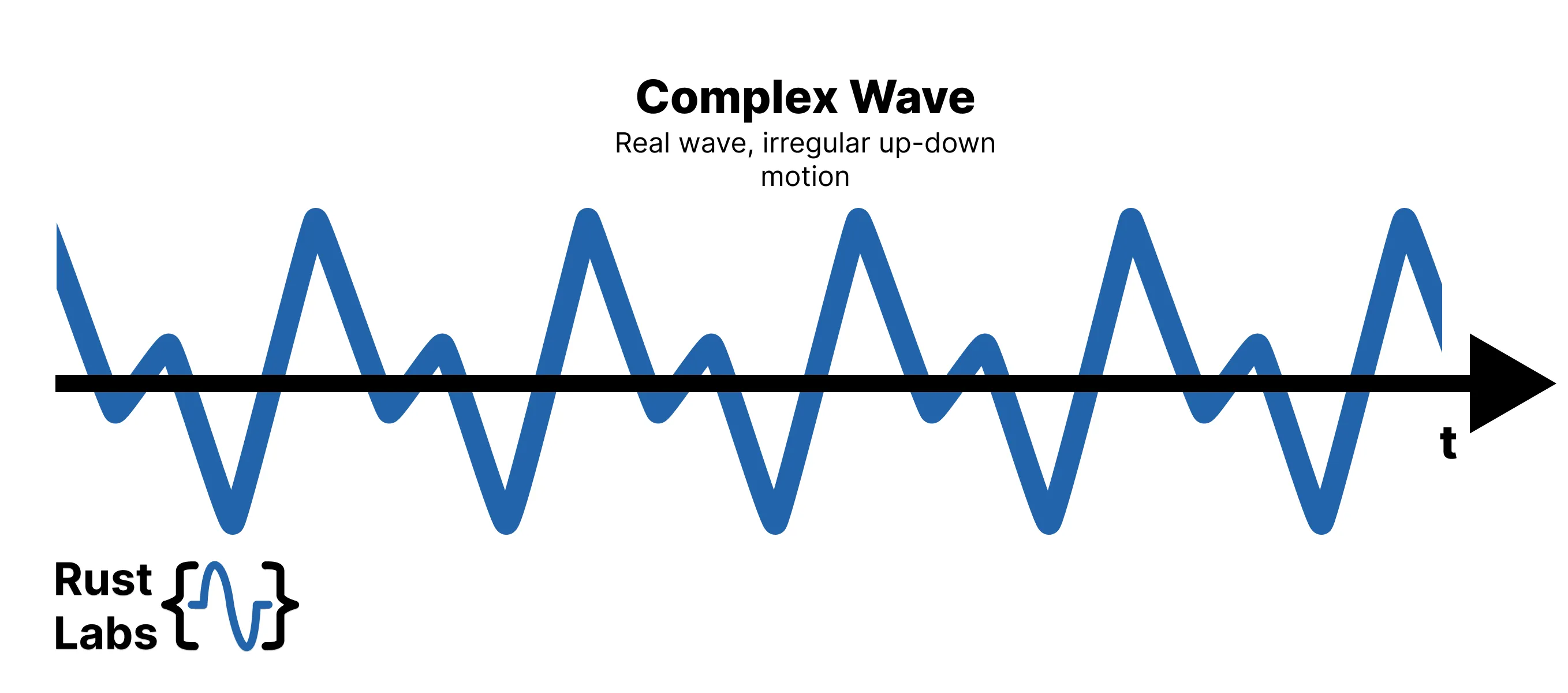
Of course, real sound is rarely as clean as the analogies and examples we’ve been working with (See Fig 4). Every example thus far has used pure sine waves, simple waves defined mathematically, which are great as a teaching tool and instrumental in the digital domain, but not something you’d ever find in reality. Actual sound is messy; it zigs and zags, bouncing off the environment, with every wave being influenced by all the waves already in the medium. It’s complex and not easy to define. Even the clearest note played in the quietest room will be shaped by the reflections, resonance and noise that are unavoidable in the real world. Interestingly, every complex wave can actually be deconstructed into a sum of simple waves, a core idea at the heart of signal analysis, but this, along with complex sound, is a story for another time.
Looking forward, future articles will explore these topics and more, ranging from real-world waveforms and the added complexity of real sound to psychoacoustics and the mechanical and mental processes of hearing. We’re also planning to tackle the digitisation of sound, including how digital audio works and how we convert physical sound into something you can play from your phone. Keep your eyes on this space; there’s more to come.
References
- Kinsler, L. E. (Ed.). (2000). Fundamentals of acoustics (4th ed). Wiley.
